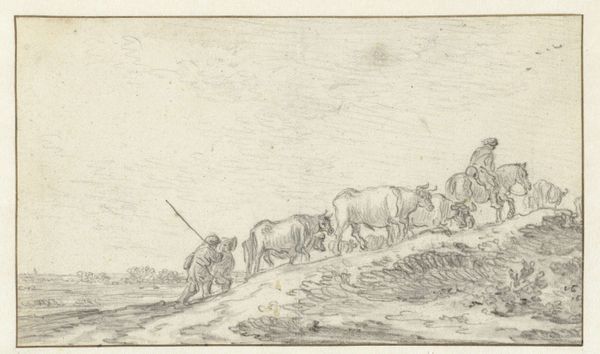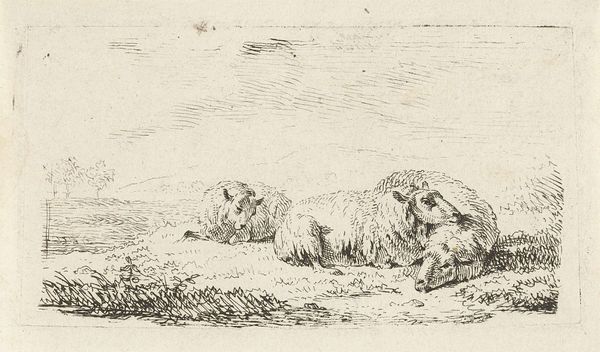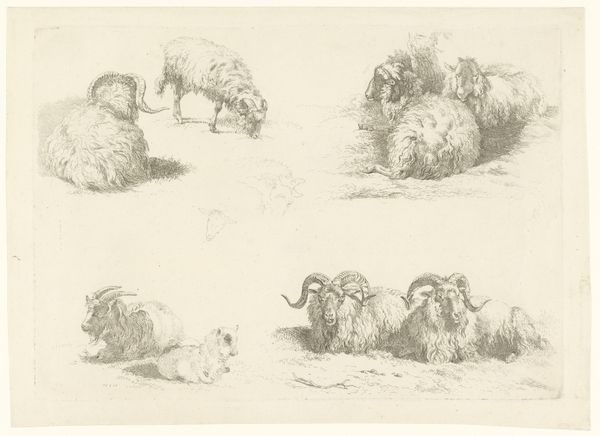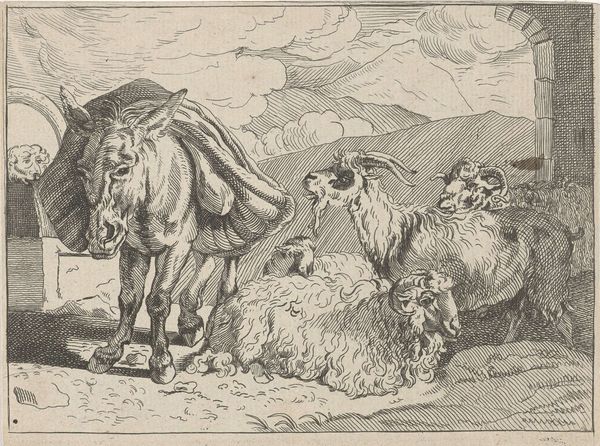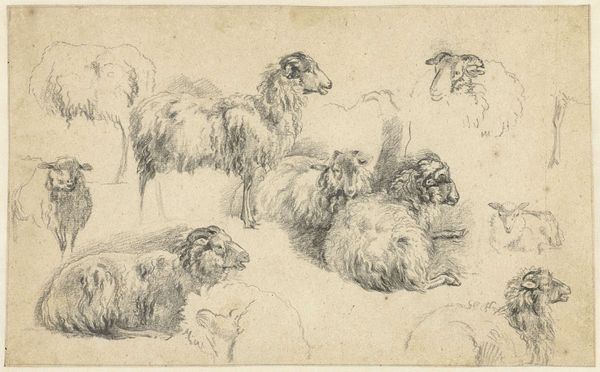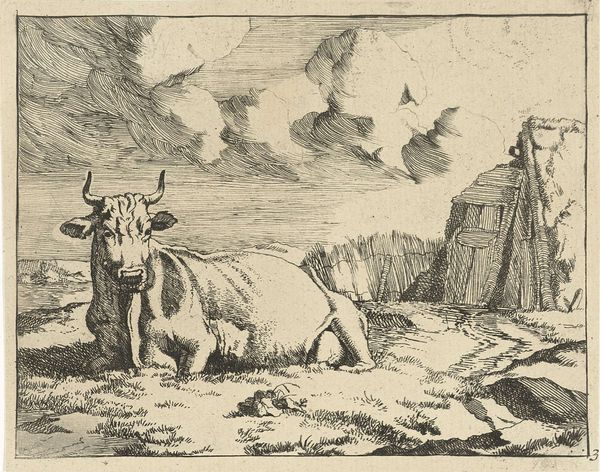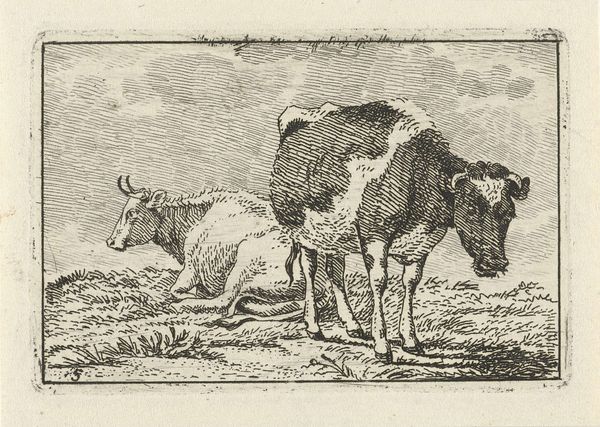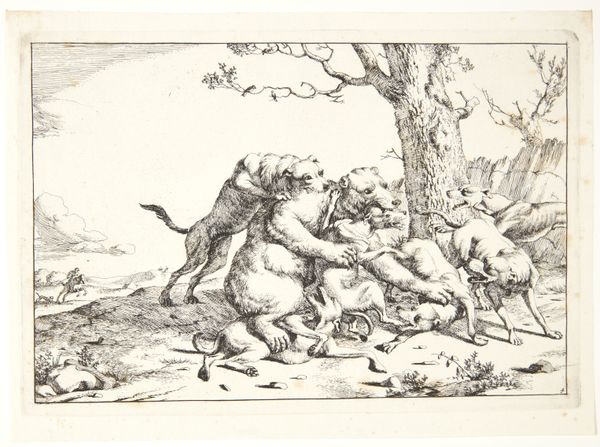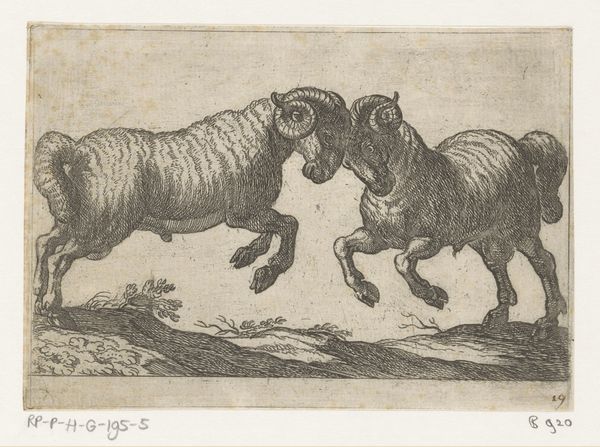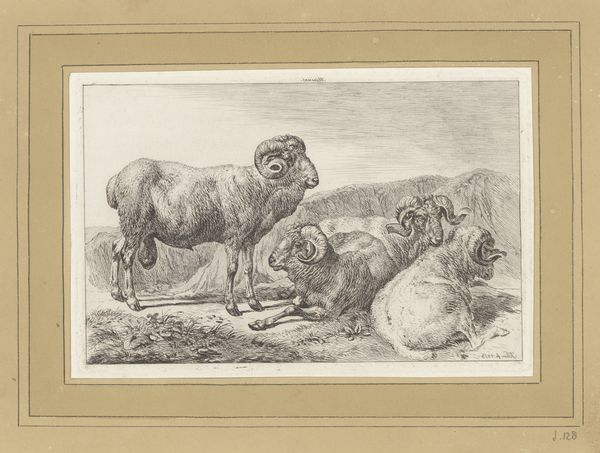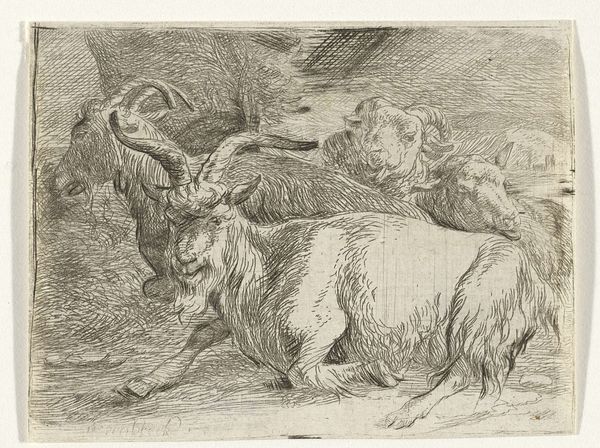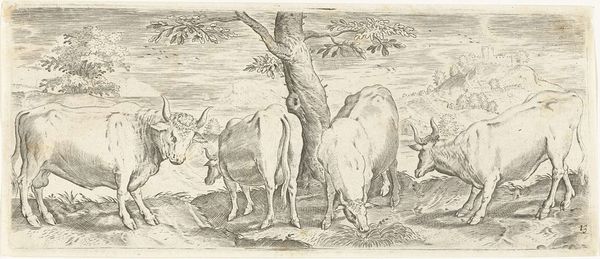
drawing, pencil
#
pencil drawn
#
drawing
#
aged paper
#
toned paper
#
light pencil work
#
pencil sketch
#
sketch book
#
landscape
#
personal sketchbook
#
pencil
#
sketchbook drawing
#
pencil work
#
sketchbook art
#
realism
Dimensions: height 115 mm, width 190 mm
Copyright: Rijks Museum: Open Domain
Curator: The Rijksmuseum holds this intriguing pencil drawing, "Twee liggende rammen," or "Two Lying Rams," attributed to Pieter Gerardus van Os, made sometime between 1791 and 1839. What’s your initial take? Editor: My first thought is how delicate it is. It has this almost ethereal, faded quality to it, as though the rams are fading into memory itself. The line work is so fine. You can practically feel the softness of the wool through the pencil. Curator: Absolutely. Rams, historically, represent virility, determination, leadership, even the zodiac sign Aries which marks the start of Spring and new beginnings. Consider their pose; they aren’t charging, but resting, suggesting perhaps a contemplative power, or even a world-weariness. Editor: And the sketch-like quality makes me think about the artist’s process. Was this a preparatory drawing for something larger, maybe a painting? Or a quick study done outdoors, observing the animals firsthand? The subtle variations in shading suggest van Os was very attentive to light and texture. Look at how he used the pencil to capture the fluffy wool. Curator: The landscape backdrop is minimal—just enough to ground the figures, really throwing focus onto the animals themselves. Their horns, powerfully rendered, stand in stark contrast to their seemingly docile posture. Horns are defense and status, signaling an internal conflict of power contained. Editor: And the choice of pencil—it speaks volumes. Unlike, say, oil paints, pencil allows for erasure, for revisions. Perhaps this reflects a social and economic accessibility of the materials as well: van Os could capture the essence of these animals with simple, readily available means. It brings up questions about who had access to creating art and depicting rural life. Curator: A fascinating point! The simplicity itself lends a sense of authenticity. It feels less staged than a formal portrait might, drawing the viewer into a more intimate connection with these creatures, stripped of excess artifice. Editor: Exactly. This drawing offers insight into both van Os’ technical skill and the changing relationship between humans, animals, and the land during that period. It makes you appreciate the labor and intention embedded even in the humblest of materials. Curator: This simple study unlocks so much. Seeing through layers of meaning, a glimpse into not just pastoral life, but inner human realities as well. Editor: And a reminder that profound art can come from the everyday, from simple materials skillfully employed, reflecting society’s views toward both making art and living alongside nature.
Comments
No comments
Be the first to comment and join the conversation on the ultimate creative platform.
